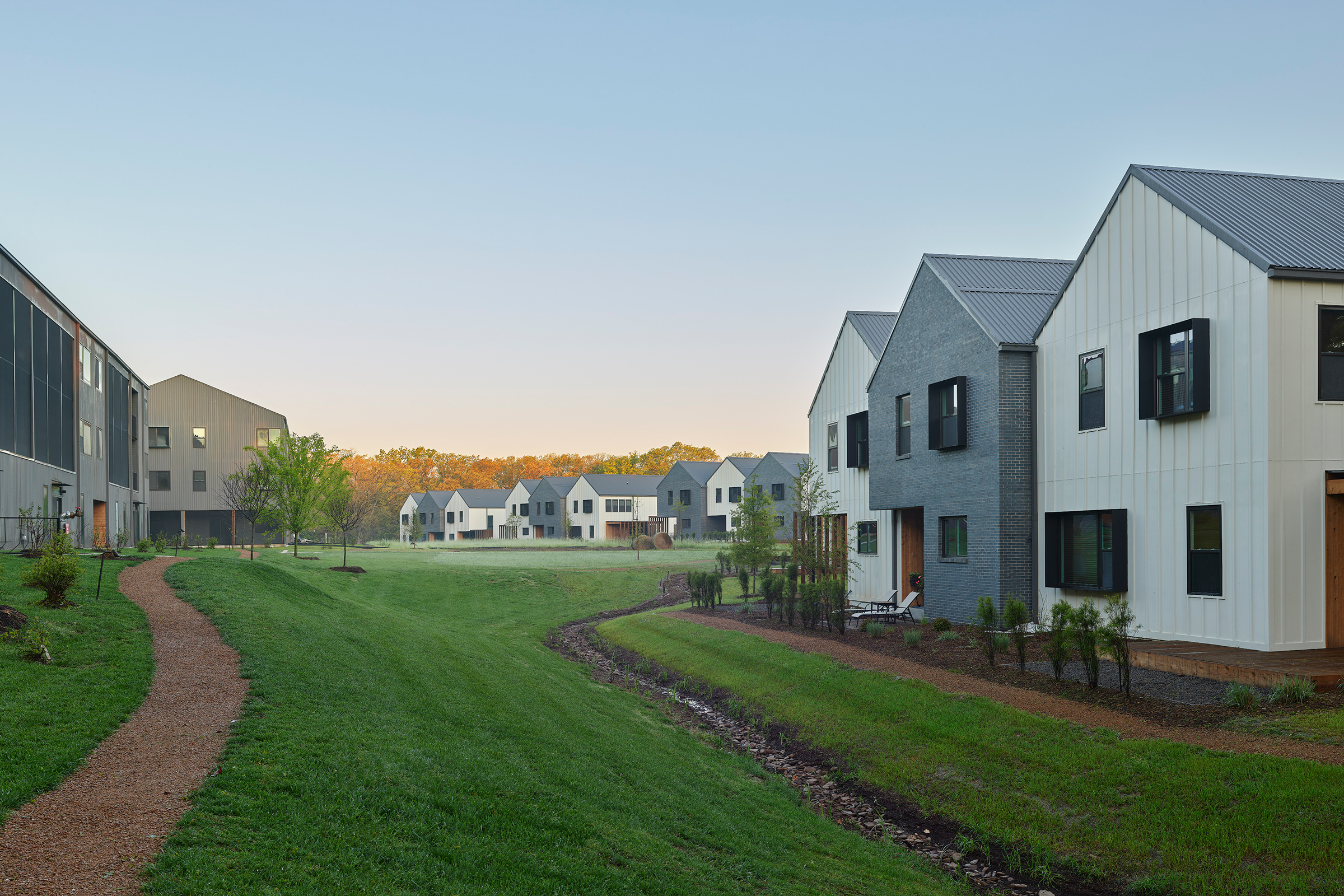Story at a glance:
- A new type of living and working recently opened in Bentonville, Arkansas—an urban agriculture neighborhood.
- Modus Studio designed Red Barn to combine the concepts of live, work, and play sustainably.
- The design fights sprawl, which puts strain on municipal infrastructure, hinders watersheds, and destroys valuable farmland.
In Bentonville, Arkansas (population 50,000) a new kind of community is springing to life. Modus Studio has designed Red Barn Bentonville—a new urban agriculture neighborhood—as a contextually sensitive development aimed at helping the surrounding community while providing a high-quality place to live, work, and play.
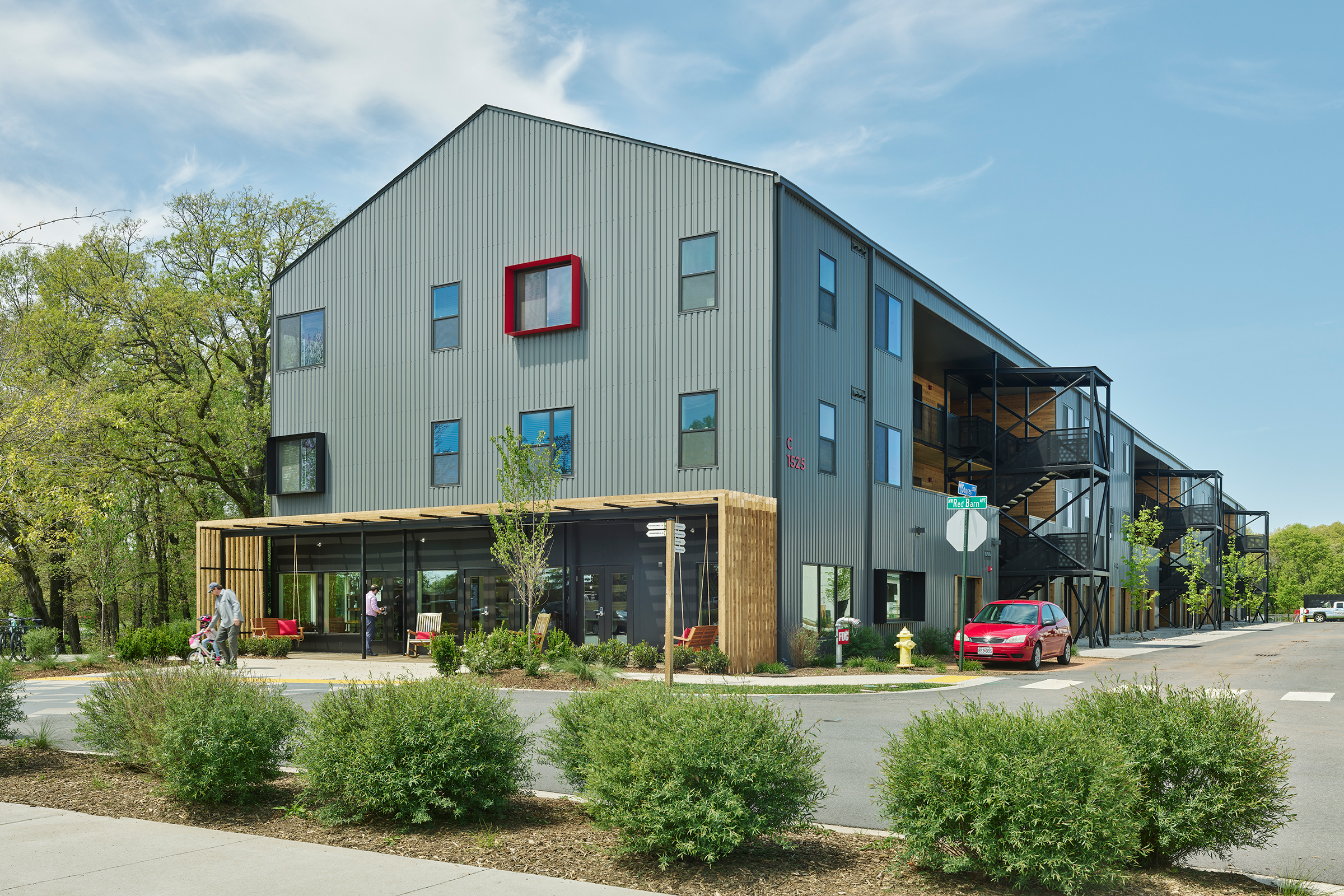
Photo by Timothy Hursley
As the area in and around Bentonville continues to grow, the design team at Modus Studio says you might expect to see sprawl.
Architects say sprawl puts strain on municipal infrastructure, hinders watersheds, and destroys valuable farmland—and that’s something they hope to avoid, especially in an area like Northwest Arkansas.
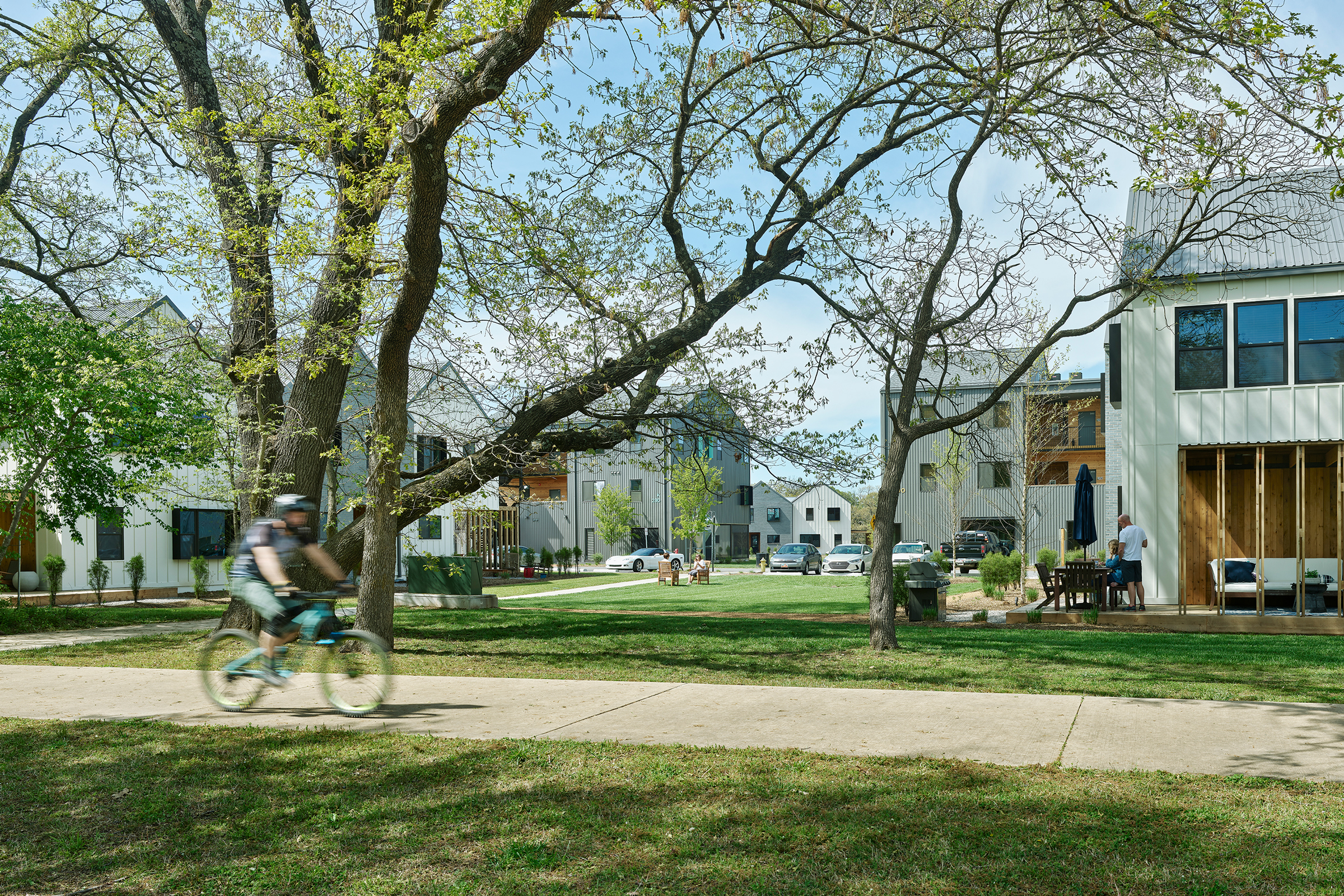
Photo by Timothy Hursley
The design team developed this property around conservation-planning principles—including preserving state-significant soils while retaining and enhancing heritage fields, leveraging agriculture as a community-building amenity, and continuing the city’s dedication to trail connectivity.

Photo by Timothy Hursley
The architects say this project provides young professionals, growing families, and older couples an opportunity to live in close proximity to downtown Bentonville while still being nestled in a pristine bucolic context.
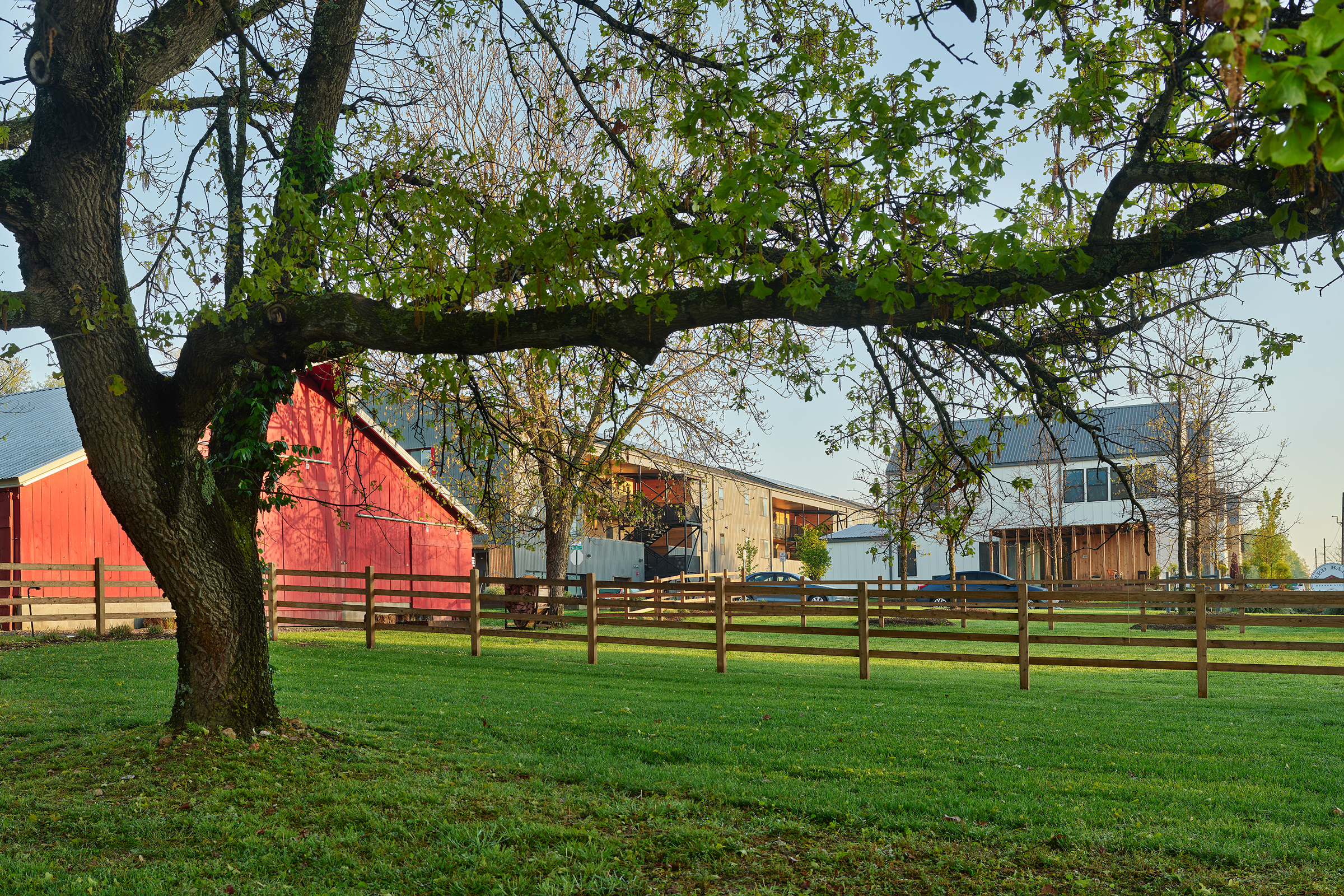
Photo by Timothy Hursley
Neighborhood diversity is maximized by a variety of housing types.
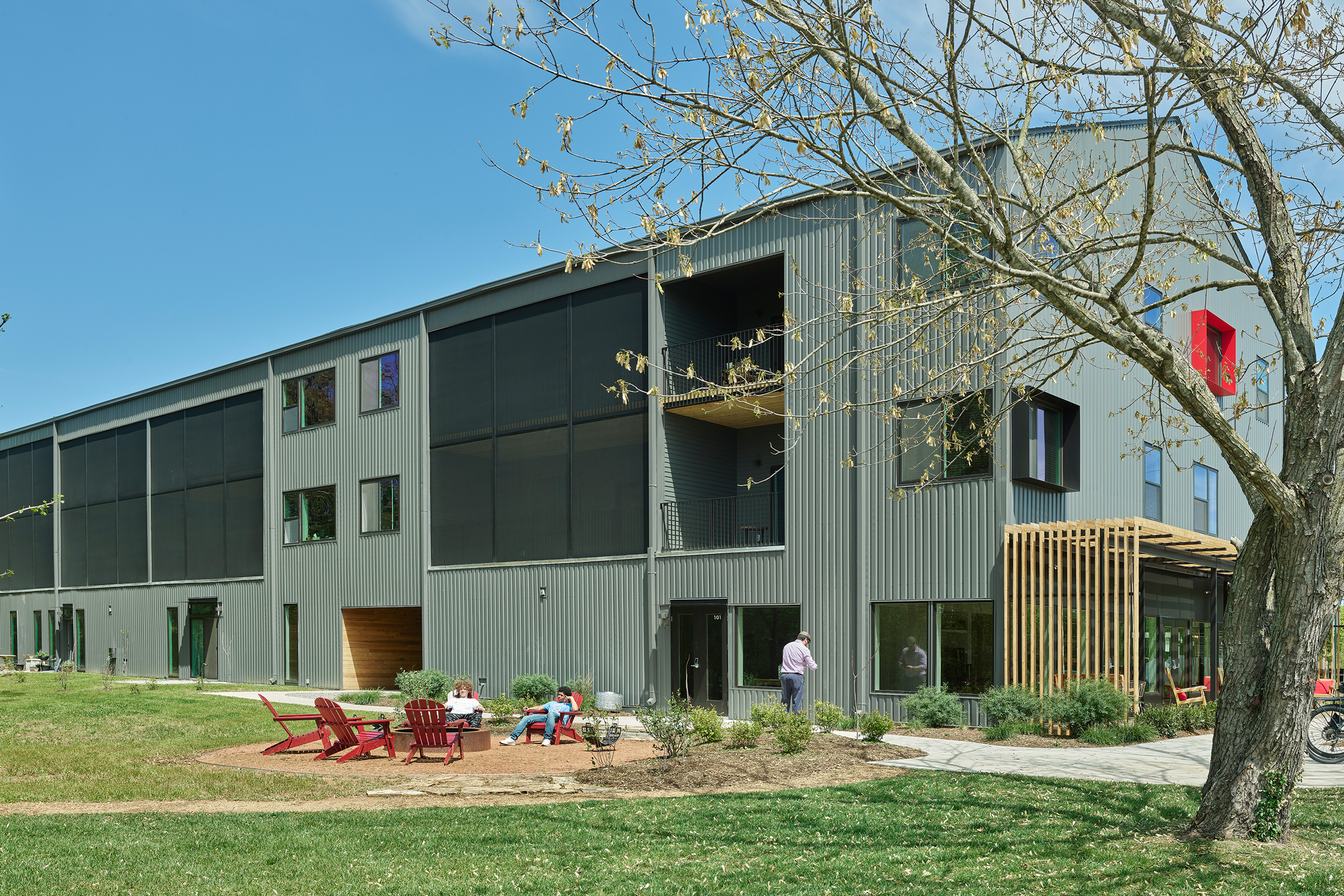
Photo by Timothy Hursley
The first phase of Red Barn Bentonville includes townhouses clustered around green space.
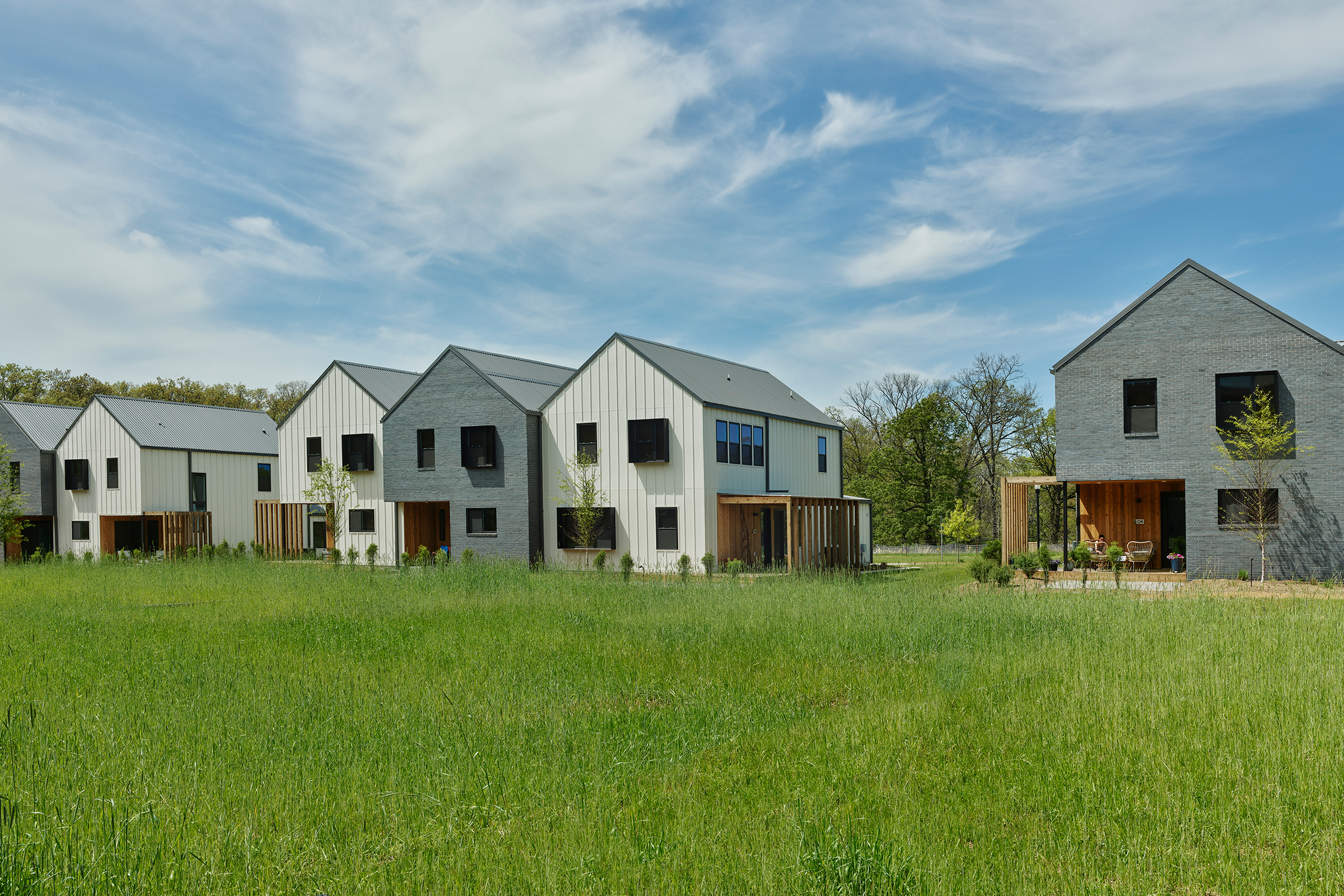
Industrial materials are juxtaposed by woodscreens and large screen porches at Red Barn. Photo by Timothy Hursley
Flats also connect to the site through large screened porches that look onto the forests and fields, while the townhouses connect at the ground through neighborhood lawns and community spaces.
The forested area in the ravines is programmed with tree houses and campsites.
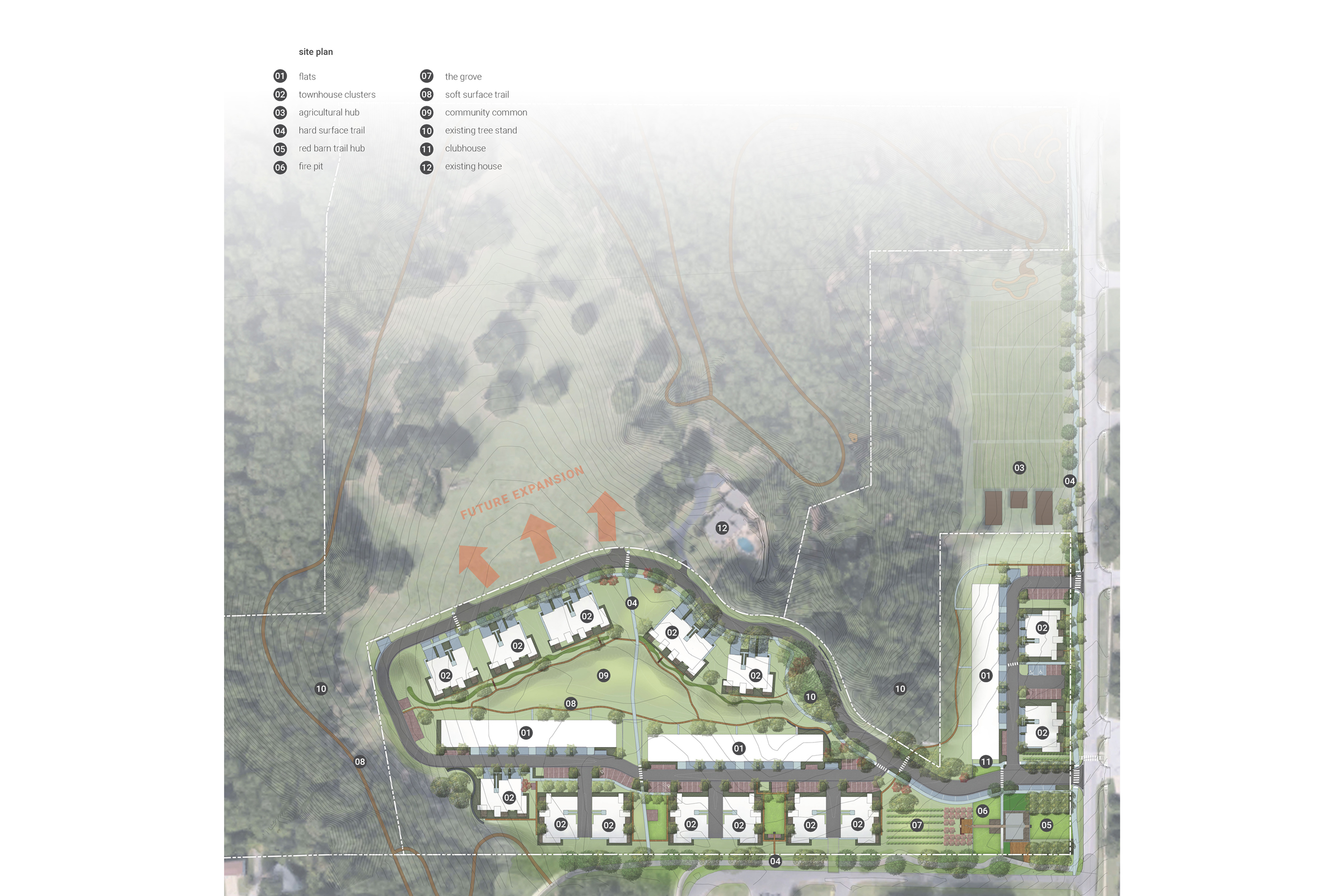
Image courtesy of Modus Studio
Future phases will include low-density single-family residential and an additional smaller agricultural common.

